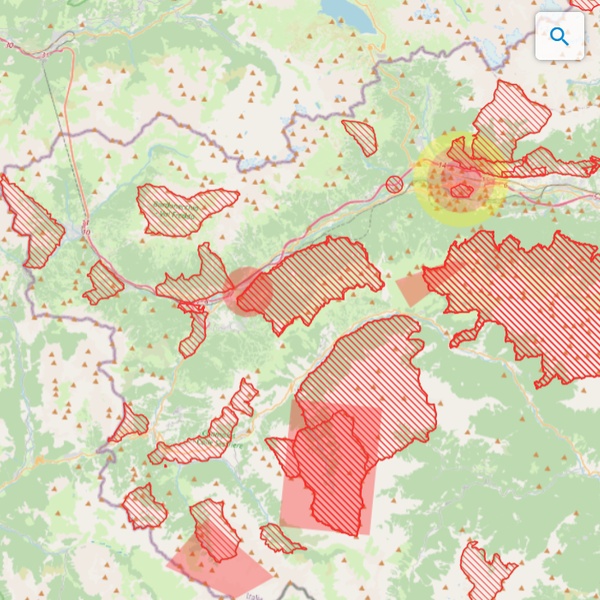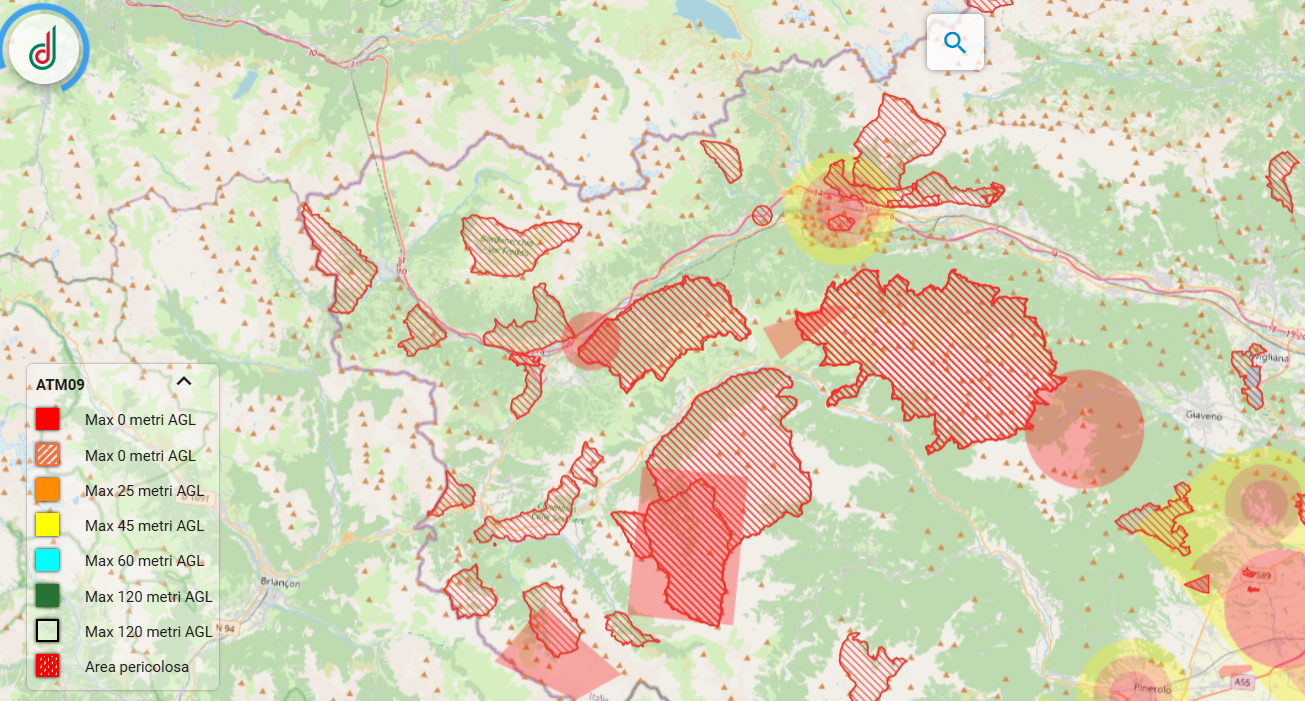Clearer flight bans with drones in protected areas
Sept. 18, 2025
A detail from the D-Flight maps showing the borders of the territories within the Protected Areas of the Cottian Alps (and not only), where drone flying is prohibited.
On the official maps of the D-Flight platform, the boundaries of parks, nature reserves, and sites of the Natura 2000 Network have been published: it becomes easier to understand where drone flying is prohibited. This is also an important update for the Parks of the Cozie Alps.
A clearer rule for everyone
The D-Flight platform, a company owned by ENAV (responsible for managing and controlling civil air traffic in Italy), is the portal that collects official information in Italy regarding drone (UAS) flight limits. Last August, its cartographic layers relating to areas where flying is prohibited or regulated were updated with precise indications of the boundaries of parks, nature reserves, and Natura 2000 sites in Italy, in accordance with what has already been regulated by the Framework Law on Protected Areas No. 394/1991, art. 11 paragraph 3, letter h. Therefore, the regulation has become unequivocal, putting an end to possible interpretations used during verification and sanctioning activities by monitoring personnel.
Within the Protected Areas of the Cozie Alps, this means that drone flying is prohibited within the boundaries of the natural parks Gran Bosco di Salbertrand, Val Troncea, Orsiera Rocciavrè and Laghi di Avigliana, the nature reserves of the Orridi di Foresto and Chianocco, and the 16 sites belonging to the Natura 2000 network managed by the Park Authority.
Why can drones harm ecological balances?
Even though they are small, drones are not harmless. Here are some ways their use can seriously disturb nature.
• Disturbance of animal behavior: many birds hear the noise or see the flying object as a predator, interrupting nesting and abandoning their eggs.
• Flight reactions: species such as chamois, deer, and ibex, if disturbed by sudden sounds or visual approaches, flee. These escapes incur unnecessary energy expenditure, which can be critical for survival during resource-scarce periods.
• Interference in feeding and reproductive behaviors: aquatic species, birds feeding near water or along the shore may interrupt foraging; animals that decide to nest in quiet areas are pushed towards less protected or disturbed places.
• Cumulative effects in fragile environments: in mountainous areas, for example, where the summer season is short, resources are limited, and the climate is harsh, disturbance can delay reproduction, reduce reproductive success, or compromise the growth of young.
To deepen this topic, we refer to the article “Small aircraft, big impact: drones” published in the “Reasons for a ban” section of this site.
Know the rules to respect them
With the official boundaries now clearly delineated also on D-Flight, anyone wishing to use a drone must consult the maps on the site where all indications relating to the territory in which the flight is intended are present. In protected areas (Parks, Reserves, and Natura 2000 sites), flying is prohibited without authorization.
You might also be interested in...
- campaign "What a bunch of flowers" and the protection of wild flora
- campaign A bond of security. Dogs on a leash in parks
- campaign Mushroom Gathering 2024
- campaign The reasons for an obligation: Artva, probe and shovel
- campaign Cycling in the Parks: Yes, but...
- campaign Only if necessary. Motor vehicles in the Parks
- campaign The mushrooms: a heritage of the environment and popular traditions
- campaign The foundational prohibition of parks: hunting
- campaign Winter use in the Cozie Alps Parks, the reasons behind some prohibitions
- campaign The thyme of the Cozie Alps Parks on Geo
 Ente Parchi Alpi Cozie
Ente Parchi Alpi Cozie
